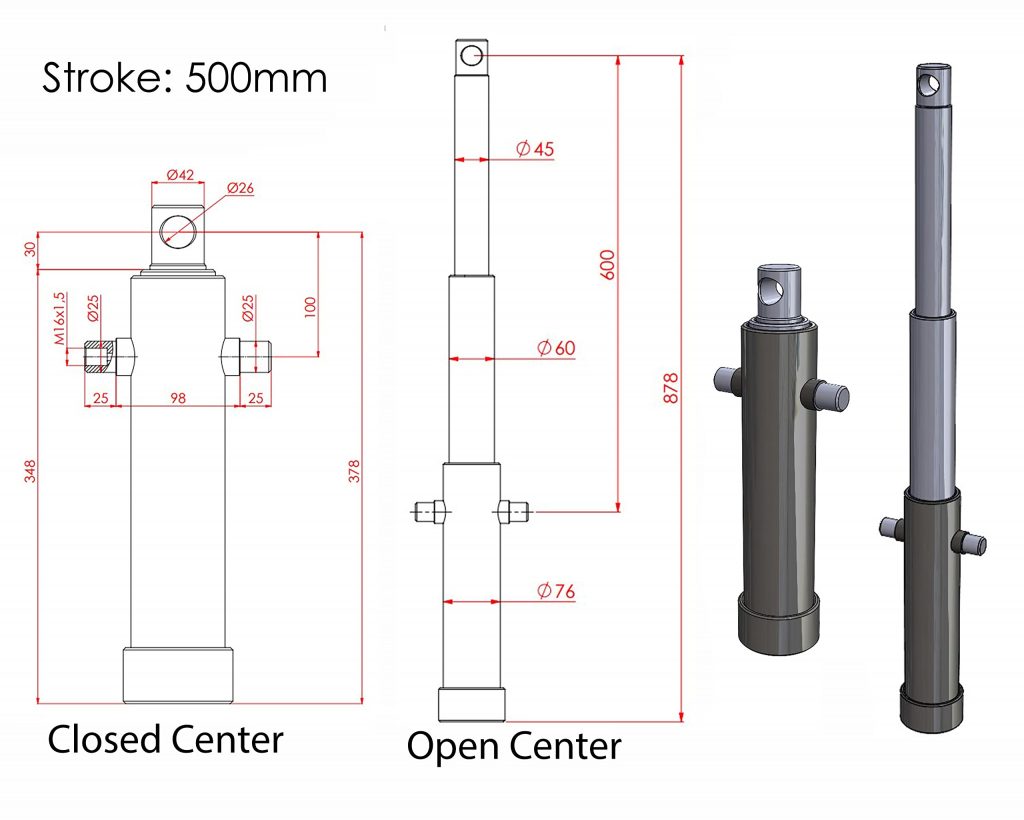UPC vs APC: En Djupdykning i Fiberoptiska Kontakter
När det kommer till fiberoptiska nätverk är valet av kontakter avgörande för prestanda och tillförlitlighet. Två vanliga typer av kontakter är UPC (Ultra Physical Contact) och APC (Angled Physical Contact). Denna artikel utforskar skillnaderna mellan dessa två, deras användningsområden och ger dig en djupare förståelse för att välja rätt kontakt för ditt specifika behov.
Vad är Fiberoptiska Kontakter?
Fiberoptiska kontakter är komponenter som används för att koppla samman fiberoptiska kablar. De säkerställer att ljussignalen överförs med minimal förlust. Kvaliteten på kontakten påverkar direkt nätverkets prestanda, inklusive signalstyrka och dataintegritet.
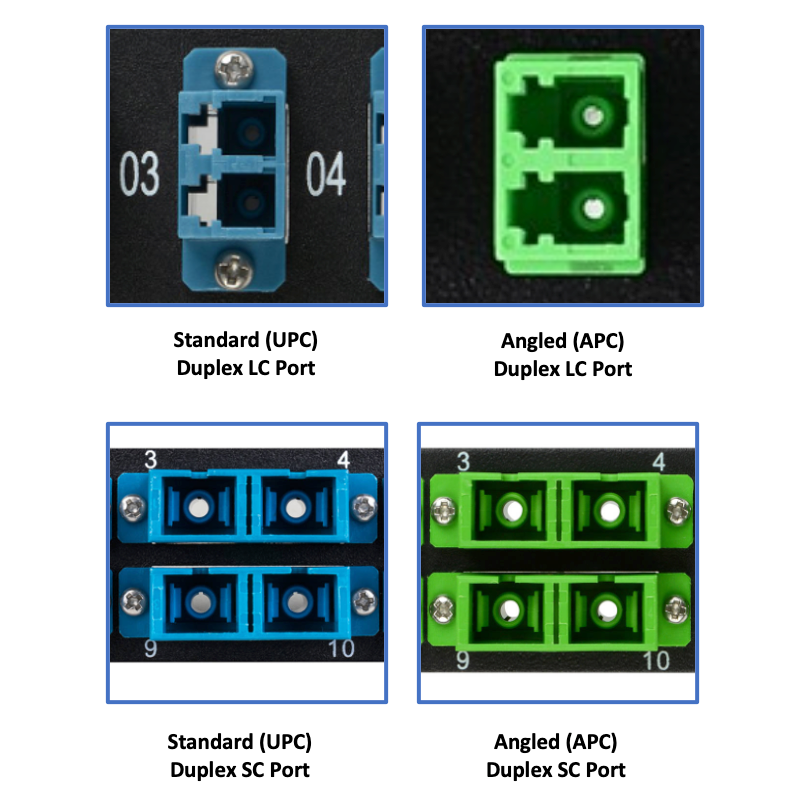
UPC (Ultra Physical Contact)
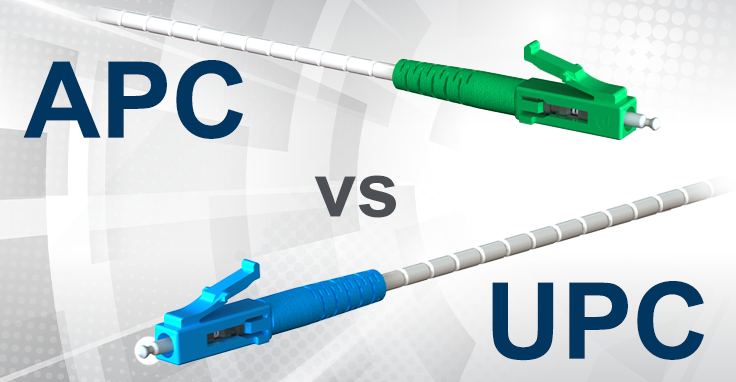
UPC-kontakter har en polerad yta som minimerar luftgapet mellan fiberändarna. Detta resulterar i en förbättrad signalöverföring och lägre reflektion. Här är några viktiga aspekter av UPC-kontakter:
APC (Angled Physical Contact)
APC-kontakter har en vinklad polering (8 grader) som ytterligare minskar reflektionen genom att reflektera ljuset in i fiberns mantel istället för tillbaka till ljuskällan. Detta gör dem idealiska för applikationer som kräver extremt låg reflektion. Här är några viktiga aspekter av APC-kontakter:
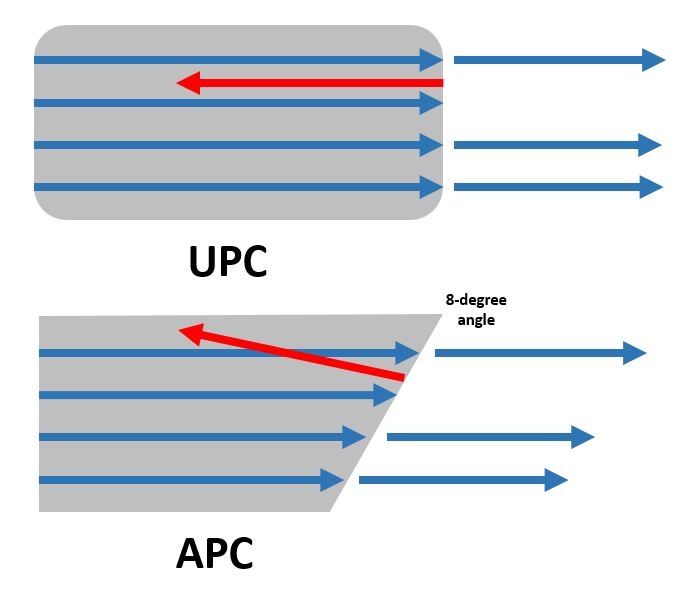
Jämförelse mellan UPC och APC
För att bättre förstå skillnaderna mellan UPC och APC, låt oss titta på en jämförelsetabell:
Egenskap
UPC
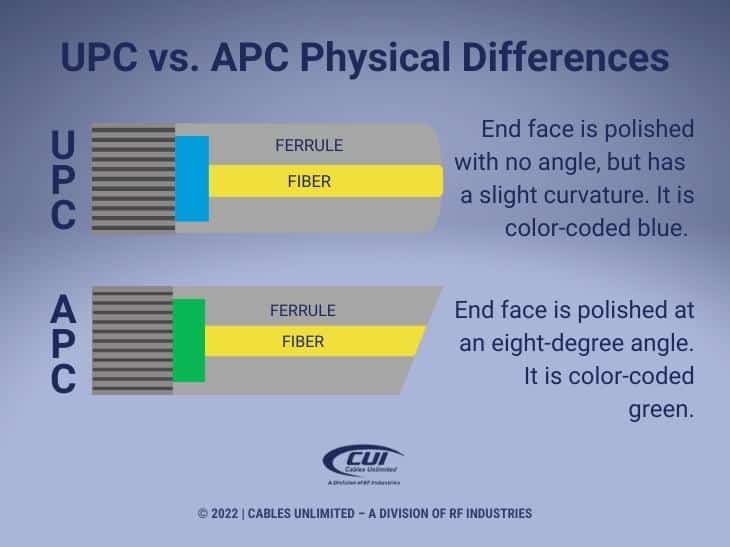
APC
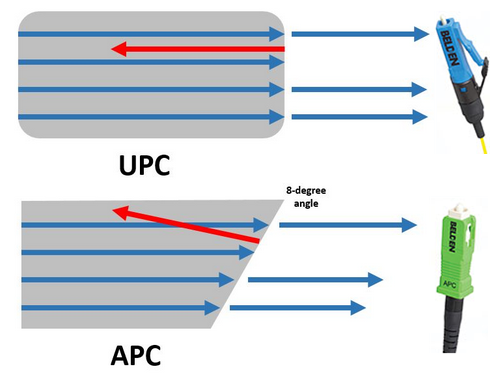
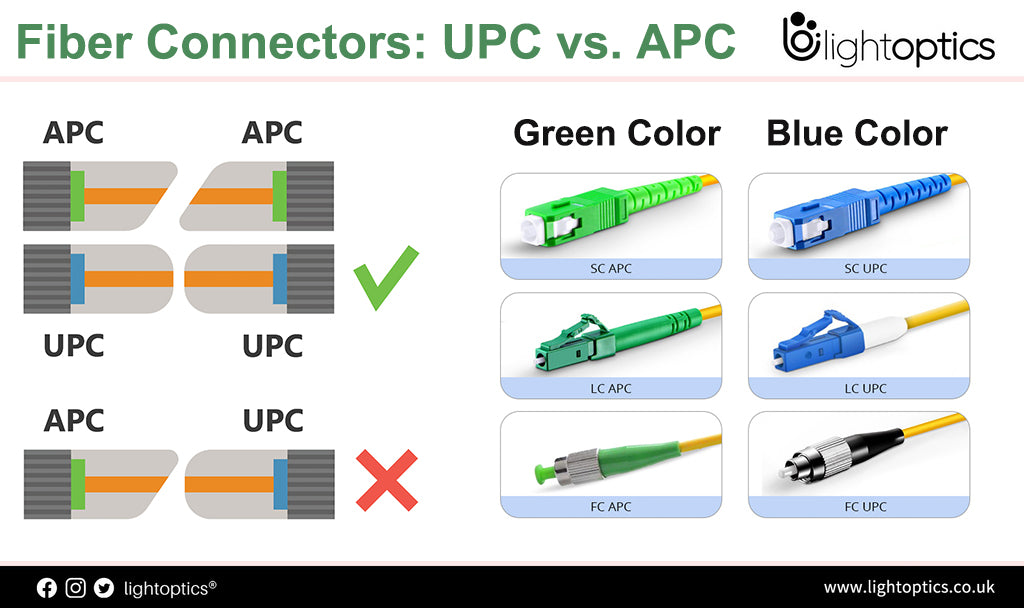
Välja Rätt Kontakt
Valet mellan UPC och APC beror på applikationen och kraven på reflektion. För applikationer som kräver extremt låg reflektion, som FTTx och PON, är APC det bästa valet. För mindre känsliga applikationer, som digital TV och datornätverk, kan UPC vara tillräckligt.
Viktiga Faktorer att Överväga
Slutsats
Att förstå skillnaderna mellan UPC och APC fiberoptiska kontakter är avgörande för att bygga ett tillförlitligt och högpresterande nätverk. Genom att noggrant överväga dina behov och applikationer kan du välja rätt kontakt och säkerställa optimal prestanda.
För ytterligare information och expertis inom fiberoptiska lösningar, kontakta en specialist inom området.



